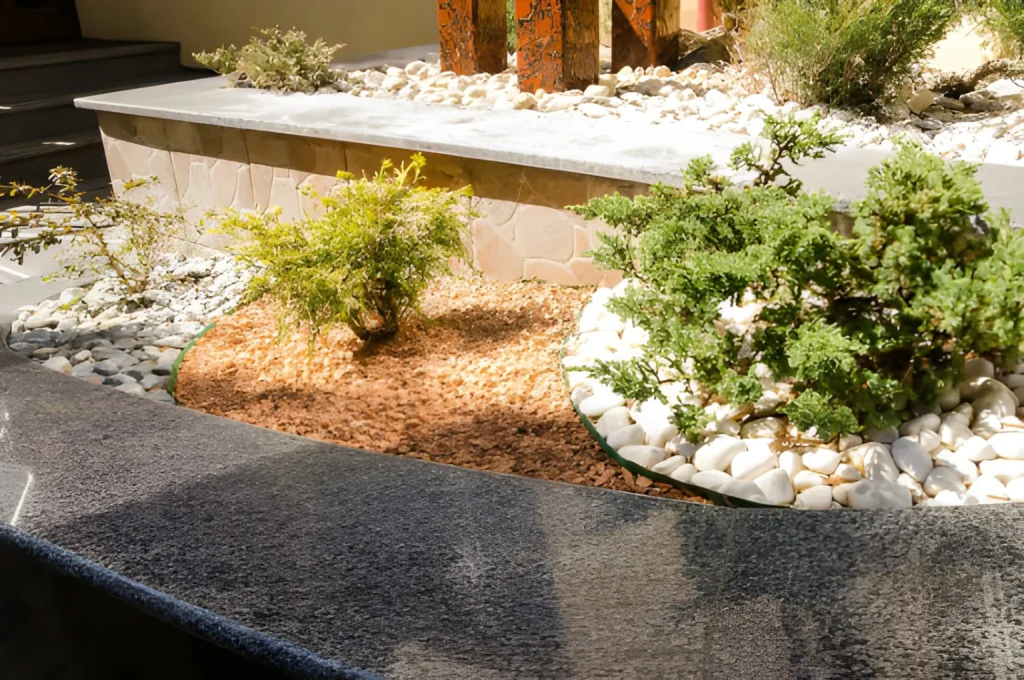A beautiful landscape is more than just a lush lawn and healthy plants. The small details, or “finishing touches,” are what truly elevate a yard from ordinary to extraordinary. These elements add structure, texture, and personality, creating a cohesive and polished look that boosts curb appeal and makes your outdoor space more enjoyable. Think of your garden as a work of art; these final details are the frame that completes the picture.
Whether you’ve just completed a major landscaping project or are looking for simple ways to refresh your existing yard, focusing on the finishing touches can make a significant impact. This guide will explore four stylish and effective ways to give your landscape a professional, refined appearance.
1. Illuminate with Strategic Outdoor Lighting
Outdoor lighting is one of the most transformative additions you can make to your landscape. It not only enhances safety and security by illuminating pathways and dark corners but also creates a magical ambiance that extends the use of your garden into the evening. A well-designed lighting scheme highlights the best features of your yard, from majestic trees to intricate stonework.
There are several types of lighting to consider. Path lights are perfect for safely guiding guests along walkways, while spotlights can be used to create dramatic focal points by uplighting trees, sculptures, or architectural features on your home. For a softer, more atmospheric effect, consider string lights draped over a patio or through the branches of a tree.
They add a festive and inviting glow perfect for outdoor entertaining. Solar-powered options have become increasingly popular, offering an eco-friendly and low-maintenance solution that is easy to install without the need for complex wiring. When planning your lighting, think in layers to create depth and interest, combining functional and aesthetic fixtures for a balanced design.
2. Define Spaces with Crisp Garden Edging
Garden edging is the secret weapon for a tidy and well-defined landscape. It creates clean lines between different areas of your yard, such as separating your lawn from flower beds, preventing grass from creeping into your garden, and keeping mulch or gravel neatly contained. This clear separation gives your landscape a sharp, organized look that instantly appears more polished.
A wide variety of materials can be used for edging, each offering a different aesthetic. Metal edging, particularly steel or aluminum, provides a sleek, modern, and durable line that is almost invisible once installed. For a more traditional or rustic feel, natural stone or brick pavers are excellent choices. They add texture and a sense of permanence to the garden design. Another popular option is plastic or composite edging, which is affordable, flexible, and easy to install along curved beds.
Regardless of the material you choose, ensuring the edging is installed correctly—level and securely in the ground—is crucial for achieving that professional, manicured appearance.
3. Add Texture and Color with Mulch
Mulch is a landscape workhorse. While its primary functions are practical—suppressing weeds, retaining soil moisture, and regulating soil temperature—it also plays a significant aesthetic role. A fresh layer of mulch provides a uniform, rich-colored background that makes plants and flowers pop. It instantly gives garden beds a clean, finished look and feel.
Mulch comes in various forms, including organic options like shredded bark, wood chips, and pine straw, as well as inorganic choices like gravel or river rock. Organic mulches have the added benefit of decomposing over time, which enriches the soil with valuable nutrients. The color of your mulch can also influence the overall look of your landscape. Dark brown or black mulches create a classic, high-contrast look that highlights green foliage, while reddish-brown mulches can add warmth.
When applying mulch, aim for a layer about two to three inches deep, and be sure to keep it away from the base of tree trunks and plant stems to prevent rot. Proper mulching, combined with a quality fertilizer, can dramatically improve the health and appearance of your plants. For instance, using a slow-release organic fertilizer like Sustane 464 fertilizer in Salt Lake City can nourish your soil while the mulch protects it.
4. Incorporate Stylish Planters and Containers
Container gardening is a versatile way to add personality and style to any corner of your outdoor space. Planters and containers allow you to introduce color and greenery to areas where planting in the ground isn’t possible, such as patios, decks, and balconies. They can also be used to create focal points, define entryways, or add vertical interest to your garden design.
The key to using containers effectively is to choose planters that complement your home’s architecture and your personal style. For a modern aesthetic, opt for containers with clean lines in neutral colors like gray, black, or white. If your style is more traditional or eclectic, consider terracotta pots, colorful glazed ceramics, or rustic wooden barrels. Grouping containers of various sizes and heights can create a dynamic and visually interesting display. Don’t be afraid to experiment with “thriller, filler, spiller” planting combinations—a tall, dramatic plant (thriller), mounding plants to fill in the middle (filler), and trailing plants to spill over the sides (spiller). This classic formula ensures your container arrangements look lush and professionally designed.
By focusing on these four key areas—lighting, edging, mulch, and planters—you can add the stylish finishing touches that will transform your landscape into a polished and inviting outdoor retreat.
Also Read-
